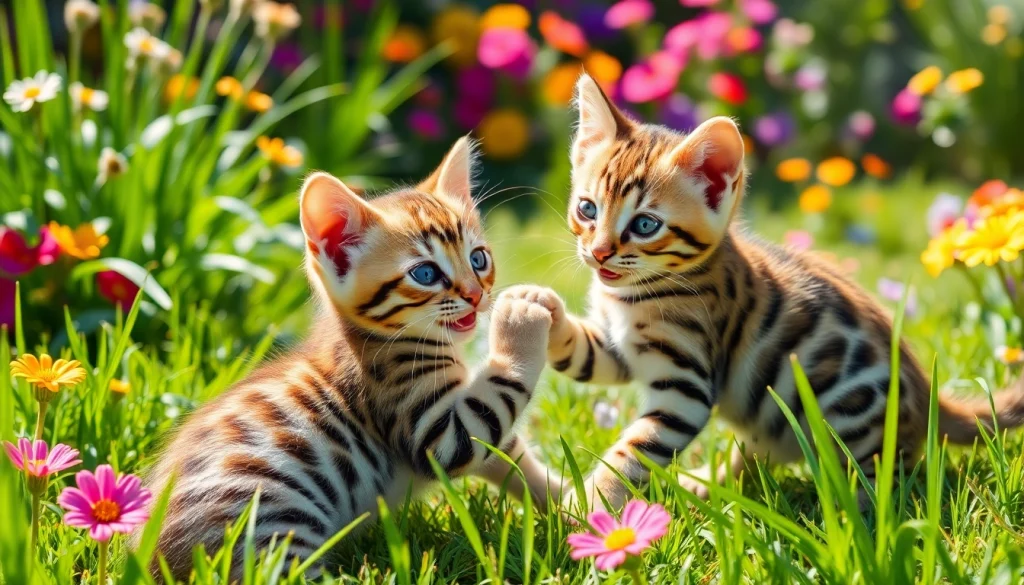Introduction to Bengal Breeders Orange County
The Bengal cat is a stunning breed known for its exotic appearance, intelligent nature, and playful demeanor. With their leopard-like spots and captivating personalities, it’s no wonder that Bengal cats have gained immense popularity among cat lovers. If you’re considering adding a Bengal to your family, finding Bengal breeders in Orange County is crucial to ensuring you get a healthy kitten from a reputable source. In this comprehensive guide, we’ll explore the landscape of Bengal breeding in this vibrant area, discuss the importance of choosing the right breeder, and provide essential information about caring for your future Bengal companion.
Overview of Bengal Cats
Bengal cats are a hybrid breed, created by crossing domestic cats with the Asian leopard cat. This breeding has resulted in their unique spotted coat and active, intelligent behavior. Bengals are known for their high energy, playful antics, and social nature. They thrive in environments where they can climb and explore, making them ideal companions for active households. Understanding their historical context as well as their needs is key to ensuring a harmonious relationship with a Bengal cat.
The Importance of Reputable Breeders
Selecting a reputable breeder is essential not only for the well-being of your future kitten but also for the promotion of ethical breeding practices. Unethical breeding can lead to health issues and behavioral problems in kittens. A good breeder will prioritize the health and temperament of their cats, conducting regular health screenings and maintaining high breeding standards. Buying from a reputable breeder ensures that you receive a kitty that reflects the true qualities of the Bengal breed.
What to Look for in a Bengal Breeder
When searching for a Bengal breeder in Orange County, several factors should guide your decision:
- Registration and Certification: Look for breeders who are registered with recognized cat associations such as The International Cat Association (TICA) or the Cat Fanciers’ Association (CFA).
- Transparency: A good breeder should be open about their breeding practices, health testing, and the history of their cats.
- Facility Conditions: Visit the breeder’s facility to ensure that it is clean, well-maintained, and conducive to the animals’ well-being.
- Health Guarantees: Responsible breeders often provide health guarantees for their kittens and are willing to discuss any health issues openly.
- References and Reputation: Check online reviews and ask for references from previous buyers to gauge the breeder’s reputation.
Finding Trusted Bengal Breeders in Orange County
Researching Local Breeders
One of the first steps in finding a Bengal breeder is conducting thorough research. Utilize online resources, social media platforms, and local directories to compile a list of potential breeders in Orange County. Look for forums and groups dedicated to Bengal cats, as those communities often share valuable insights on reputable breeders. Engaging with these communities can also lead you to hidden gems that may not be prominent in search results.
Checking Registrations and Certifications
Ensure that the breeders you are considering are registered with recognized organizations. TICA and CFA registration are key indicators of a breeder’s commitment to ethical practices and quality breeding standards. These certifications are tied to additional requirements regarding health testing and adherence to breed standards.
Visiting Breeder Facilities
Once you have identified potential breeders, visit their facilities if possible. A personal visit allows you to observe the cats’ living conditions and assess the general environment. Look for signs of cleanliness, a safe space for the cats, and how the cats interact with the breeders. Meeting the kittens’ parents can also provide insight into the temperament and health of your future pet.
Understanding Bengal Cat Health and Care
Common Health Concerns in Bengals
Bengal cats are generally healthy but can be prone to specific health issues, including:
- Hypertrophic Cardiomyopathy (HCM): A hereditary condition affecting the heart, it is vital to choose breeders who screen for this condition.
- Progressive Retinal Atrophy (PRA): This degenerative eye disease can lead to blindness; responsible breeders conduct genetic testing to ensure they do not breed affected cats.
- Gastrointestinal Issues: Bengals can suffer from sensitive stomachs and food allergies, making nutrition an essential aspect of their care.
Preventative Care and Regular Check-ups
Regular veterinary check-ups are crucial in maintaining your Bengal’s health. Annual wellness visits can help catch potential health issues early. Discuss with your vet about vaccinations, flea and tick prevention, and any breed-specific concerns. Establishing a preventative care plan early on can help ensure your Bengal leads a long and healthy life.
Nutrition and Diet for Bengals
A high-quality diet is vital for the overall health of your Bengal cat. Because they are active and muscular, they require a diet that is rich in protein and low in carbohydrates. Look for premium cat foods specially formulated for active breeds, and consider supplementing with wet food to maintain hydration and optimize nutrient absorption. Discuss dietary decisions with your veterinarian to ensure your Bengal’s nutritional needs are met.
Preparing Your Home for a Bengal Kitten
Essential Supplies and Setup
Before bringing your new Bengal kitten home, you’ll need to prepare your living space. Essential supplies include:
- Litter box: Choose a size suitable for kittens and place it in a quiet, accessible location.
- Food and water dishes: Opt for stainless steel or ceramic bowls to prevent slipping and keep cats cool.
- Scratching post: Provide a sturdy scratching post to satisfy your Bengal’s natural instinct to scratch.
- Toys: Interactive toys will engage your Bengal’s hunting instincts and provide mental stimulation.
- Cat tree or climbing structures: Bengals love to climb, so providing vertical spaces will keep them entertained.
Integrating the Kitten into Your Family
When you bring your Bengal kitten home, it’s essential to introduce them gradually to family members and other pets. Allow your kitten to explore their new environment at their own pace. Use positive reinforcement and treats to create a bond with your new pet. Supervised interactions with children and other pets can help ensure a harmonious integration.
Creating a Safe Environment
As with any pet, creating a safe home environment is critical. Bengal cats are curious and adventurous, which means they can easily get into trouble. Secure windows and balconies, remove toxic plants, and ensure that small objects or choking hazards are out of reach. Regularly check your home for any potential hazards that might pose a risk to your new feline friend.
Connecting with the Bengal Community in Orange County
Networking with Other Owners
Connecting with other Bengal cat owners can provide you with invaluable support and resources. Look for local cat shows, meet-ups, or online communities where you can share experiences and advice. Building a network with other Bengal enthusiasts can also open up opportunities for playdates for your kitten and potential future breeding or adoption options.
Participating in Local Events
Engaging in local events such as cat shows can be a fantastic way to learn more about Bengals and meet experienced breeders and owners. Many cities have organized events focused on different breeds, providing a platform for education, networking, and even adoption. Participating in these events can deepen your understanding and appreciation of the Bengal breed, as well as provide insights into responsible ownership.
Resources for Ongoing Support and Education
The Bengal cat community is rich in resources for pet owners. From breed-specific forums and social media groups to books and accredited online courses, there is a wealth of information available to help ensure you are providing the best care for your Bengal. Stay informed about breed health issues, nutrition, and training methods by utilizing these resources.





